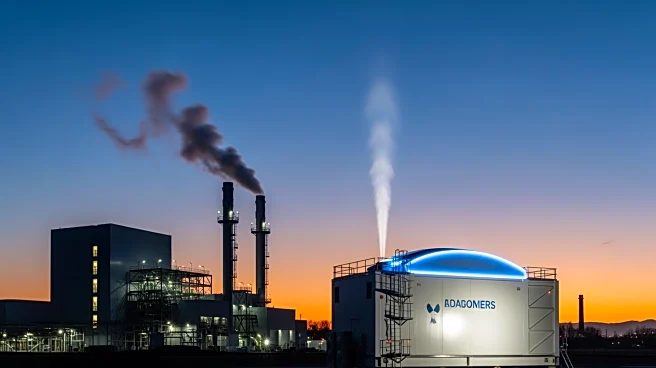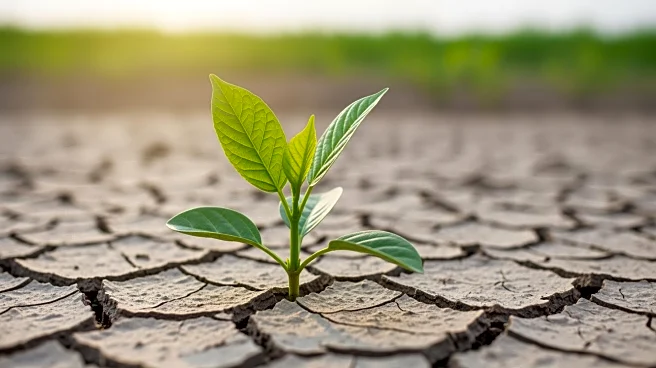What's Happening?
A study conducted by Cranfield University has revealed that Artificial Light At Night (ALAN) significantly increases ecosystem respiration, leading to a greater release of carbon dioxide from plants, microbes, and animals. This increase in carbon release is not
matched by a corresponding rise in photosynthesis, which typically removes carbon dioxide from the atmosphere. The research utilized satellite data and 86 carbon flux monitoring sites across North America and Europe to demonstrate ALAN's widespread impact on the global carbon balance. The study suggests that ALAN, affecting approximately a quarter of Earth's land surface, is a readily reversible stressor that could be mitigated with better lighting design.
Why It's Important?
The findings from Cranfield University underscore the hidden impacts of light pollution on ecosystems, disrupting energy flows, animal behavior, habitats, and natural patterns. The increased carbon release due to ALAN poses significant implications for climate models and global carbon budgets, as it reduces carbon storage in ecosystems. Addressing light pollution could represent a rare opportunity for a win-win-win scenario for the environment, energy efficiency, and human wellbeing, given its link to negative effects on human health and its contribution to global electricity use.
What's Next?
The study advocates for the inclusion of ALAN in climate models and suggests that adopting dimmable, directional, and spectrally sensitive lighting technologies could reduce light pollution almost overnight. This approach could help mitigate the growing footprint of artificial illumination, which increases by around 2 percent each year, and its subtle but significant shift in the global carbon balance.
Beyond the Headlines
The study highlights the ethical and environmental dimensions of light pollution, emphasizing the need for policy changes at local, state, and national levels to reduce its impact. The potential for immediate action to reverse light pollution contrasts with the more complex challenges of addressing other climate stressors, offering a unique opportunity for rapid environmental improvement.














